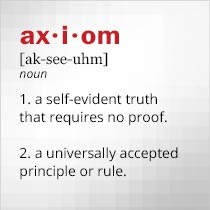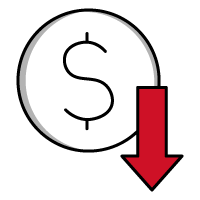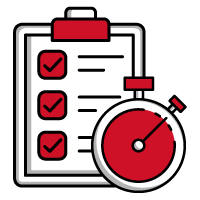Investigating Inverters As Part of a Solar Array
June 03, 2019
 |
Solar energy is a clean alternative to other sources of electricity for many business and home users of electricity, once the right equipment is installed. It requires the highly visible solar panels placed in a position and an angle best suited to “catch” the sunlight for the maximum amount of time each day. The number of photovoltaic (PV) cells used in those panels is determined by the amount of electricity required from a PV system and the maximum amount of power will not always be the same due to cloudy days and rainstorms which will limit the amount of electricity from PV sources. But solar energy is a renewable resource and is inexpensive once a PV system has been installed and the different components working properly. This can be done with the proper tools and the right test equipment to evaluate the conversion of sunlight to direct-current (DC) electricity and then, if necessary, to check on the change of DC voltage to AC voltage through an inverter. For many solar energy arrays, that inverter is the most important part of the mix since it is only one step away from the coffee maker!
PV-powered energy systems are becoming more common as individuals become more environmentally aware and businesses become more bottom-line conscious. Such systems are easy to identify by their large arrays of PV cells (hopefully) pointed towards the sun and converting sunlight to DC electricity. The number of solar cells in each array is determined by the amount of available sunlight, the amount of electricity generated by each panel, and the amount of energy that will be consumed each day.
These large cells are what is visible of the PV system, but they are by far not the only main components in the system. Energy storage, in the way of durable rechargeable batteries such as lead-acid batteries or absorbent-glass-mat (AGM) batteries, is an important component in any PV energy system. Batteries for this purpose should have been developed for “deep cycling” or many charge-discharge applications because of the nature of the application. AGM batteries perform well over long time periods but are typically more expensive than lead-acid batteries. Unless all the stored energy in the batteries is to be used as DC voltage, a high-capacity inverter will be needed to transform the DC voltage from the PV cells to AC voltages that can be used in homes and businesses.
Estimations of energy required from a PV system must be relentlessly conservative because of the relative inefficiency of PV arrays in converting sunlight into electricity. Solar panels will only generate their rated outputs when pointed directly at the sun, when photons are converted to electrons by means of the physical/chemical effects in certain types of semiconductor materials. Individual solar cells can produce about 0.5 to 0.5 V DC per cell, and cells are combined into panels to produce higher voltages. In addition, sunlight is seasonal, with days of sunlight shorter in the winter, and such differences must be accounted for throughout the year.
Simulating Performance
When adding an inverter to a PV array, PV array simulators provide the means for testing the performance of an inverter in a system, in terms of such parameters as maximum output power and efficiency. The PV array simulator must be rated at a minimum input voltage that is higher than the peak voltages provided by the solar inverter for accurate readings and to avoid damage to the instrument. Some of the total energy in a PV energy system will be lost due to the loss of power due to inversion. High-quality inverters are typically rated for about 90% or higher efficiency when inverting DC electricity to AC electricity, and a PV array simulator as well as the PV electric budget for a home or business should also account for this loss of energy in the inverter.
As an example, one Photovoltaic/Solar Simulation Solution is the Keysight Technologies N8937APV Solar Simulator/DC Power Supply and software to test for the maximum power point tracking (MPPT) of the inverter in the PV array. The simulator provides as much as 15 kW programmable DC power at a single port, doing the job of multiple power supplies with its flexibility. In Europe, the combination of the simulator and software can test to the requirements of the EN50530 standard for PV arrays. The simulator mimics the output characteristics of a PV array under different operating conditions, such as across temperatures, in partial sunlight, even with different solar cell chemistries, to better understand the behavior of PV array and how an inverter behave under different conditions. The simulator works with SAS Control software to create usable current-voltage (I-V) curves that can be downloaded to the simulator when searching for the maximum power point of a PV system or inverter.
Another tool for checking PV systems and inductors, the Solmetric PVA-1500S PV Analyzer, is a PV analyzer and I-V curve tracer also rated for maximums of 1500 V and 30 A. It provides ±0.5% accuracy with 25 mV voltage resolution and 2 mA current resolution. It features a wireless link between the analyzer and the SolSensor™ Wireless PV Reference Sensor, which can be used as far away as 100 m (300 ft.) for measurements without wires.
Precision loads are also part of testing any PV power system, to simulate the connection of different loads on the PV system, including reverse current from inductive loads. For example, NH Research models 9430-12 and 9430-24 are regenerative AC loads conservatively rated for maximum power levels to 12 and 24 kW, respectively, for testing linear and nonlinear power systems. These loads operate in all four quadrants with selectable phase inputs and outputs and a built-in waveform digitizing measurement system. They can be used for evaluating almost all components in the PV power path, including inverters, rectifiers, and switches.
The Chroma 62150H-600S is a programmable power supply that can simulate open-circuit voltages to 1 kV and short-circuit currents as high as 25 A in PV and other power systems. It is well suited for PV inverter testing, with a memory capable of storing as many as 100 I-V curves for reference. Using 16-b measurement precision, it is capable of better than 0.05%+0.05% full-scale (FS) voltage accuracy and 0.1%+0.1% FS current accuracy.
Additional test gear for building and maintaining a PV system include charge controllers, to ensure that storage batteries are not over discharged and can be full charged from a PV array, AC loads, and programmable power supplies. A choice of charge controller is based on the ratings of the solar panels and the storage batteries. For example, for a system with 12-V DC storage batteries and 120-W solar panels, the resulting amperage is 120/12 = 10 A. A charge controller for this system should have a rating that comfortably exceeds its 10 A, such as a rating of 15 A or more. Well-designed charge controllers employ different charging algorithms to preserve the long-term health of the storage batteries.
More equipment or datasheets on these and many other units is available on our site. For help selecting the right test equipment for your next project, contact Axiom at either 760-806-6600 or sales@axiomtest.com.
Back to BLOG








